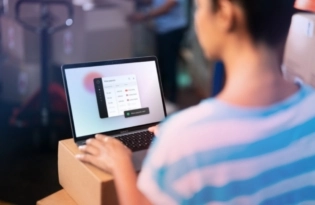Opportunities in Latin America are growing, are you poised to seize them?
Latin America is one of the world’s fastest-emerging markets. Thanks to high mobile adoption, eCommerce demand is growing. But outdated payment systems hamper LATAM success. How can these logistical challenges be met? Learn how to overcome these obstacles and seize opportunities!

In a nutshell: Latin America presents exciting opportunities for marketplaces looking to capture the hearts (and wallets) of one of the world’s fastest growing emerging markets. But in every conquest, lies a challenge. The barriers to LATAM entry are many, with iffy logistics, old-school payment habits, and tricky regulation standing in the way of success. But things are looking up – with mobile adoption at an all-time high, a previously unbanked population is now reachable, and with it, the demand for eCommerce Is growing.
When it comes to growing global economies, Latin America (LATAM) is a force to be reckoned with.
With a population of over 650 million, eCommerce sales are starting to pick up rapidly. In 2019, eCommerce in LATAM is predicted to grow by 20% to accommodate the increasing demand of a rapidly growing middle class. 2018 closed with a turnover of $98 billion in eCommerce sales and 2019 is set to reel in roughly $120 billion.
Increasing opportunities are placing this emerging region at the forefront of an eCommerce revolution. Yet despite being poised for success, several barriers, deeply rooted in historical infrastructure failures and in the old-school payment habits of many of the region’s inhabitants, are hindering marketplaces from maximizing on LATAM opportunities. So, what are these pain points and how can they be overcome?
Battling the barriers
Amongst the challenges to winning the LATAM market are the following:
- Logistics Hiccups: Shipping and logistics have, historically, poised a challenge to eCommerce growth in Latin America. Poor infrastructure and lengthy, unreliable delivery services have been known to leave consumers waiting for weeks (in some cases up to 60 days). Transportation routes are still inefficient in some regions, and others still lack postal codes. With this reality, logistics costs for eRetailers are high – amounting to up to 15% of COGS. While in other parts of the world same-day delivery has become the norm, in LATAM, logistics are playing catch-up.
- No Centralized Currency: Operating across borders becomes pricey in a region that operates in many currencies. Whereas in Europe the Euro reigns supreme – in Latin America, there is no single or dominant currency. Marketplaces operating into the region must accommodate local currencies (in relative low-circulation). In doing so, they are losing hefty sums to transfer and conversion fees, while exposing themselves to currency risk and potential fraud. Bridging the gap between the local LATAM consumer and the international marketplace seller becomes key – yet is more difficult in a region where banking redundancy and reliability are relatively weak.
- Challenging Regulation: High taxation throughout the region, cumbersome customs regulations, and widespread corruption serve as major roadblocks to the eCommerce delivery flow. These all become tricky to navigate. According to the Inter-American Development Bank, the legal underpinnings for commercial transactions are in desperate need of updating. The region has yet to fully adapt to best support global commerce. It is lacking multilateral trade and integration agreements, and accordingly, a regional legal standard. The absence of a standard, at times, poses a regulatory challenge for retailers operating in the eCommerce sphere.
- Clinging to Cash: According to a report by Americas Market Intelligence, credit card penetration in LATAM stands below 30%. More people in Mexico, Peru and Colombia have smartphones than they do bank accounts. Cash is king – especially in the more rural and less developed areas of LATAM. 75% of the region’s population (487.5M people) is still underserved by banks and financial institutions. But eCommerce retailers have found a way to counter this constraint by implementing cash-accepting mechanisms for online payments. They’re not necessarily low-maintenance, as they involve printing out a voucher that can be paid, in cash, to a large network of affiliated agents pre-delivery – but they work; In 2017, 41% of LATAM internet shoppers opted to pay through such methods. With that said, banking accessibility and credit card adoption in the region’s largest markets (Brazil, Argentina, Mexico) are high, further drawing on the region’s vast economic disparity.
Guillermo Bracciaforte, Co-Founder of Workana, a LATAM freelance marketplace with over 1M registered users, cited securing the right partner to facilitate local payments as a major barrier to cracking the market:
When looking to pay our users [across the region], we posed the question of: Which payment methods will make our users’ life easiest? The most difficult task was finding the right partner in each country. We managed to secure a varied offering of payment methods – from local and international credit cards, to bank transfers, and cash payments through local means. For example, in Brazil, the ‘boleto bancario’ is a commonly used push-payment system; We knew we had to accommodate it from day one.
Our second challenge was technological – it lay in integrating these payment systems into our platform. With Payoneer, the experience was simple. Inconveniences were already accounted for, and our users were familiar with the service.
The key to making everything succeed: Choose a payment method on which your users already rely.
Markers of opportunity
There is an upside to this story. The growing consumer confidence in eCommerce is shifting the LATAM retail footprint from offline to online. As this happens, opportunities are growing, shaped by the following shifts:
- Increased Mobile Adoption: Rapid mobile adoption has been a key driver for continued growth of the eCommerce sector. By 2020, the mobile adoption rate in Latin America is expected to reach 71%, well above the global average of 66%. As a result of increased usage, LTE (4G) coverage has risen sharply, and is now accessible by 70% of the LATAM population. The rise of mobile availability and increased usage is opening up doors to eCommerce and mCommerce in the more secluded parts of LATAM.
- Logistics Startups to the Rescue: According to JOC, 90% of LATAM businesses are eager to make changes and implement technological solutions that would move the lagging logistics industry into the 21st century. Local entrepreneurs have taken to the drawing board. They are fighting the pains of local logistics with AI, machine learning, and IoT technologies designed to speed up customs clearance processes, locate off-the-grid addresses, and increase transparency in shipping costs. With these solutions in place, eCommerce marketplaces are positioned to streamline delivery services, ensuring a better customer experience.
- Fintech Companies Reaching the Unbanked: The region’s increased mobile adoption has been driving fintech growth in a bid to deliver digital banking solutions to the masses. Such solutions are closing the gap between LATAM’s unbanked population and its high-earners, powering a shift away from the cash standard. For eCommerce marketplaces, this shift is golden – opening access to a previously neglected population without compromising on the security of receiving payment at POS.
- Turning East for Goods: Latin American consumers are increasingly turning to foreign (particularly Chinese) products and services. According to Americas Market Intelligence, Chinese products, accessible at a lower price point, are flooding the region and displacing locally manufactured brands. As the demand for Chinese products continues to grow, so does the chance of success for any marketplace rich in Chinese sellers.
Tips for success
For any marketplace considering entering the LATAM market – now is the time to set the groundwork.
Invest in Relationships: The LATAM region is built on relationships and trust, with a focus on long-term partnerships. In order to establish a strong foundation now, invest in building relationships that will position you as a trusted partner down the line, even when competition increases as infrastructure improves.
Localize! Localization is a major factor to global expansion, regardless of your target market. The key to Latin America is adopting regional customs and practices: speak the language, market and promote during the right peak seasons, accept local currencies, ensure your product offering is aligned with local demand, and ensure mobile accessibility of your platform.
Partner with the Right Payment Provider: Finding a payment solution with an established network in LATAM will help you manage and settle in the region’s many local currencies. Ensure your chosen partner has the support of a vast, redundant, banking and PSP network. In doing so, you will be minimizing dependence on a single provider and will be able to secure a continued flow of payments – even in times of turmoil or unrest.
There’s a readiness and willingness of the LATAM population to flock towards eCommerce. Your challenge is to capitalize on the opportunity and bridge the gap between what the people want and what their infrastructure currently allows. Luckily, Payoneer can help.
How Payoneer can help
Payoneer offers an end-to-end mass payout solution designed for global marketplaces and enterprises. Our platform extends far beyond payments, offering additional services for managing tax, offering working capital, collection of funds, and managing compliance & risk in a global environment. Companies like Hotmart, Workana, MercadoLibre, and Airbnb choose Payoneer to deliver their mass payouts across Latin America. Our robust network, which extends to 190+ countries and territories in over 70 currencies, allows enterprises to reach payees anywhere in the world with peace of mind. As a regulated entity, Payoneer guarantees that all disbursements are made through a fully compliant, tightly-audited, risk-screening platform chosen and trusted by leading digital brands across the globe.
Spark your global growth
It’s time to ensure you’ll no longer need to worry about the mounting complexities involved in international payments. From protection against payment fraud to governance, you’re in good hands with Payoneer.Payoneer Enterprise, your 3600 global payment solution, improves travel experiences by offering a full range of unmatched capabilities, such as mass payouts, reconciliation, currency management, comprehensive fraud protection (KYC), automated compliance services, and much more. Best of all, we’re able to help you make fast, easy payments to over 190 countries and regions and in over 70 currencies.
Related resources
Latest articles
-
Made in India for the World: The State of Indian Cross-Border eCommerce
The Indian eCommerce market has grown significantly in the last few years. As a result, many cross-border businesses have undergone a fast-paced digital transformation and contributed to surpassing the government-set $400 billion target of trade within a single year.
-
Defying the odds: How Ukrainian businesses thrive during war
One year post-war, Ukraine’s businesses adapt and thrive amidst adversity. Entrepreneurs showcase resilience, reflecting national tenacity. Many diversify, venturing into e-commerce and digital realms. Despite hurdles, 44% of SMBs aim for growth, with 36% hiring. Their grit underscores Ukraine’s enduring spirit amid challenges.
-
An 8-point Checklist for Finding the Best Payment Provider
There’s huge potential to expand into ASEAN markets. But only for online sellers that accept local payment methods. Finding a trusted payment solution can be a worry and a challenge. Use this checklist to vet potential payment partners. With the right payment support, the sky’s the limit!
-
How to bill your international clients
Want to learn how to bill international clients when you’re based in the Philippines? In this article we spoke to three leading business owners who shared their tips to working successful international work. Learn how they collect payments and more below.
-
How to nail your direct-to-consumer payment strategy
Asia-Pacific offers massive potential for DTC ecommerce. But cross-border payments can be a headache. We share an actionable strategy for DTC payments that’ll remove DTC payment hazards and expand your business with ease. What are you waiting for?
-
How to pay international vendors in order to promote profits and reduce risk
In this article, we’ll share our expert tips and best practices for paying international vendors, so you can focus on growing your business. From choosing the right payment method to navigating currency exchange, we’ve got you covered.














